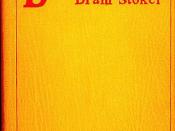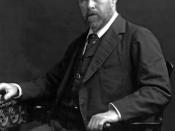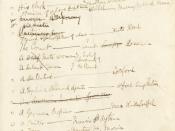Women in "Dracula"
"Dracula" is a complicated novel with many themes. Perhaps the most prominent theme is the derogatory portrayal of women. During the time period "Dracula" was written, there was a large feminist movement and women's traditional roles were starting to change. As seen in "A Doll's House" , women were supposed to be the angles of the house. They were not expected to do any work other than keeping the house clean, and entertaining the guests and children. Stoker used Dracula as a median to express his opinions towards on the subject. Stoker, like many other males of his day accepted this role of women, and was not open to the idea of women changing their roles. Women were starting to make their own decisions, and were starting to hold jobs and positions of authority. Bram Stoker himself grew up in a feminist household, but soon changed his beliefs, as he grew older.
Dracula is a sexist novel.
Stoker, a sexist, was conservative and did not approve of this. His beliefs can be seen in the novel through Lucy, a typical ditz, and a woman with no inner strength. Lucy fits into the "angel" stereotype perfectly. Mina, on the other hand, represents the new breed of women, those who are independent, smart, and resourceful, like current men of the time. Mina is successful in her battle against Dracula, where Lucy is not. This was perhaps a prophecy on Stoker's part as to how he thought the women's rights scene would play out. Stoker portayed women as zipper heads, utter ditzes, and incompetante of doing most simple things. Mina cannot be used as a counter argument because she is a "man."
There are only two prominent female characters in the book: Lucy,


